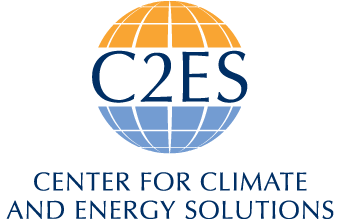COP30 marks a crucial moment for global climate change adaptation efforts, given several pivotal decisions Parties may take. COP30 also follows 2024 —the first full calendar year to surpass the critical threshold of 1.5°C temperature increase above pre-industrial levels, a clear signal that the climate crisis is intensifying. Adaptation could not be more crucial.
Understanding the Global Goal on Adaptation (GGA)
The Paris Agreement’s temperature goal is to limit “the increase in the global average temperature to well below 2 degrees C above pre-industrial levels” and pursue efforts “to limit the temperature increase to 1.5 degrees C above pre-industrial levels.” In contrast with mitigation that can be easily measured, adaptation is complex and location-specific, making it difficult to measure.
The GGA is arguably the 1.5-degree C mitigation threshold equivalent for adaptation. The best available science from the UN’s Intergovernmental Panel on Climate Change (IPCC) indicates that crossing the 1.5 degrees C threshold risks unleashing far more severe climate change impacts, including more frequent and severe droughts, heatwaves, and rainfall.
However, it needs more defining. COP30 is set to solidify the full architecture of the GGA, an effort 10 years in the making.
The core objectives of the GGA— established under the Paris Agreement— are to enhance adaptive capacity, strengthen resilience, and reduce vulnerability to climate change. In simple terms, as the climate changes and disasters intensify, the world needs to be prepared. That means protecting people and communities from climate-related disasters, ensuring food security, and building resilient infrastructure.
At COP28, Parties reached an important milestone by agreeing to a GGA Framework that includes seven thematic targets and four iterative adaptation targets to be achieved by 2030 and beyond.
Its purpose is to:
- guide the achievement of the GGA;
- reduce the increasing adverse impacts, risks, and vulnerabilities associated with climate change;
- and enhance adaptation action and support.
The targets under the GGA Framework are meant to accelerate swift action at all levels, from local to global. The targets covers critical sectors, including food and agriculture, health, water, nature, and infrastructure. For example, under the GGA Framework, the target on food and agriculture urges Parties and non-Party stakeholders “to attain climate-resilient food and agricultural production and supply and distribution of food, as well as increasing sustainable and regenerative production and equitable access to adequate food and nutrition for all” by 2030.
Tracking Progress Toward the GGA: Where Do We Stand?
But how can progress toward achieving the GGA be measured? What does it truly mean to enhance adaptive capacity, reduce vulnerabilities, or strengthen resilience?
Over the past two years, stakeholders have worked intensively on a draft list of indicators to measure progress towards the targets under the GGA Framework. At COP29 in November 2024, Parties agreed to limit the number of global indicators to 100, ensuring a manageable and balanced set.
COP30 must now formally adopt these indicators, which will serve as collective guidance and tracking mechanism, not a tool for comparing countries. They are intended to help Parties monitor their own progress, identify gaps, and take action to advance progress on adaptation.
What Happens After the Indicators are Agreed?
Finalizing the indicators is only the first step. Implementation is essential. The decisions made at COPs are the result of months, and often years, of negotiation, collaboration, and technical work. Work will need to continue post COP30 to fully operationalize the indicators. Parties could agree on modalities established last year for the Baku Adaptation Roadmap, including a set of dialogues on implementation of the GGA Framework.
In that context, several post-COP30 issues will need to be addressed regarding the indicators, including:
- Means of implementation (MOI)—finance, technology transfer, and capacity building. Workshops to address gaps in MOI could be organized under the Baku Adaptation Roadmap to guide countries in applying the indicators and having the tools and resources to implement them. Engagement with financial institutions and mechanisms could also be explored.
- Data gaps. Most countries in the Global South do not have the adaptation data the indicators require. Lack of data and capacity is a real issue for reporting and implementation and solutions need to be explored. Special attention could be given to ensure they have the tools and expertise needed.
- Indicator methodologies. The absence of methodologies for the indicators could also be explored through the Baku Adaptation Roadmap. Consideration is needed on how the indicators will be overseen for tracking and reporting purposes. This includes assigning organization supporting roles or custodian agencies for each of the indicators. Parties could also consider how insights from the tracking and monitoring of indicators for the Sustainable Development Goals (SDGs) and the Sendai Framework, among others, could help inform implementation and tracking of indicators.
The Road Beyond COP30: Looking Ahead to 2030
The list of indicators that will be agreed at COP30 is not set in stone. Rather, it serves as a foundation that is meant to drive progress towards achieving the GGA to make substantial change. The second global stocktake will start at COP31 and culminate at COP33. It will use the new indicators to assess progress towards the GGA. This will prompt important questions. What tangible adaptation progress has been achieved? Are new adaptation indicators needed to reflect emerging challenges? Should existing indicators be refined, or even removed? What will the next five years look like for adaptation?
We can anticipate that global temperatures will continue to rise. While the adoption of the adaptation indicators will not, by themselves, make countries more resilient to climate change, it will be an historic achievement that can allow the UN climate process to provide a clearer picture of how the world is adapting to a warming climate, demonstrate gaps, and identify priorities.
